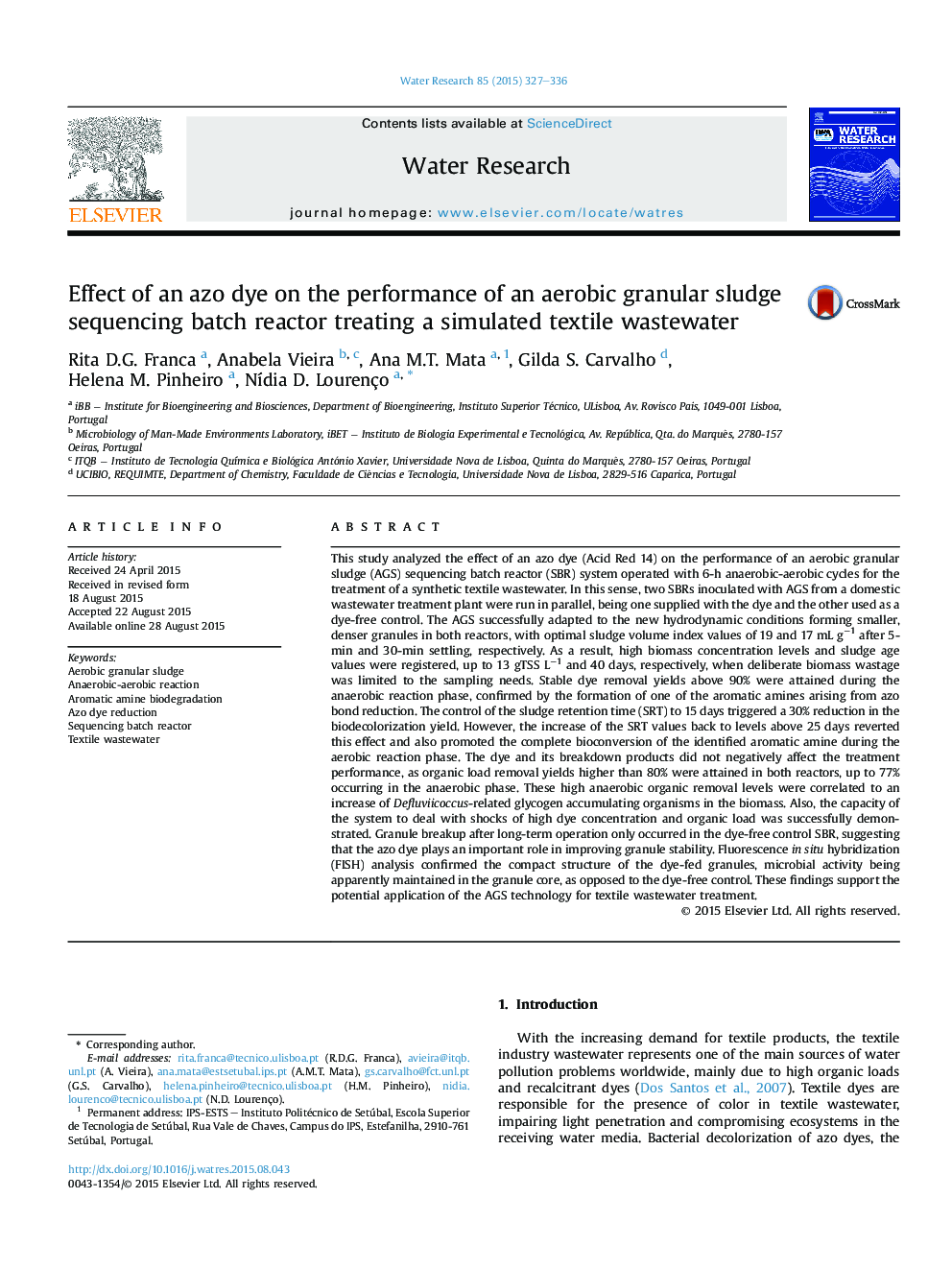| کد مقاله | کد نشریه | سال انتشار | مقاله انگلیسی | نسخه تمام متن |
|---|---|---|---|---|
| 6365884 | 1623083 | 2015 | 10 صفحه PDF | دانلود رایگان |
- Effect of an azo dye on AGS SBR treating a synthetic textile wastewater was studied.
- Efficient azo dye bioreduction was achieved with AGS in a 1.5-h anaerobic phase.
- Complete aromatic amine bioconversion was achieved in a 3.5-h aerobic phase.
- High anaerobic COD removal (77%) was associated with Defluviicoccus-related GAO.
- FISH showed reduced microbial activity at the core of granules in the dye-free SBR.
This study analyzed the effect of an azo dye (Acid Red 14) on the performance of an aerobic granular sludge (AGS) sequencing batch reactor (SBR) system operated with 6-h anaerobic-aerobic cycles for the treatment of a synthetic textile wastewater. In this sense, two SBRs inoculated with AGS from a domestic wastewater treatment plant were run in parallel, being one supplied with the dye and the other used as a dye-free control. The AGS successfully adapted to the new hydrodynamic conditions forming smaller, denser granules in both reactors, with optimal sludge volume index values of 19 and 17Â mLÂ gâ1 after 5-min and 30-min settling, respectively. As a result, high biomass concentration levels and sludge age values were registered, up to 13Â gTSSÂ Lâ1 and 40 days, respectively, when deliberate biomass wastage was limited to the sampling needs. Stable dye removal yields above 90% were attained during the anaerobic reaction phase, confirmed by the formation of one of the aromatic amines arising from azo bond reduction. The control of the sludge retention time (SRT) to 15 days triggered a 30% reduction in the biodecolorization yield. However, the increase of the SRT values back to levels above 25 days reverted this effect and also promoted the complete bioconversion of the identified aromatic amine during the aerobic reaction phase. The dye and its breakdown products did not negatively affect the treatment performance, as organic load removal yields higher than 80% were attained in both reactors, up to 77% occurring in the anaerobic phase. These high anaerobic organic removal levels were correlated to an increase of Defluviicoccus-related glycogen accumulating organisms in the biomass. Also, the capacity of the system to deal with shocks of high dye concentration and organic load was successfully demonstrated. Granule breakup after long-term operation only occurred in the dye-free control SBR, suggesting that the azo dye plays an important role in improving granule stability. Fluorescence in situ hybridization (FISH) analysis confirmed the compact structure of the dye-fed granules, microbial activity being apparently maintained in the granule core, as opposed to the dye-free control. These findings support the potential application of the AGS technology for textile wastewater treatment.
419
Journal: Water Research - Volume 85, 15 November 2015, Pages 327-336
